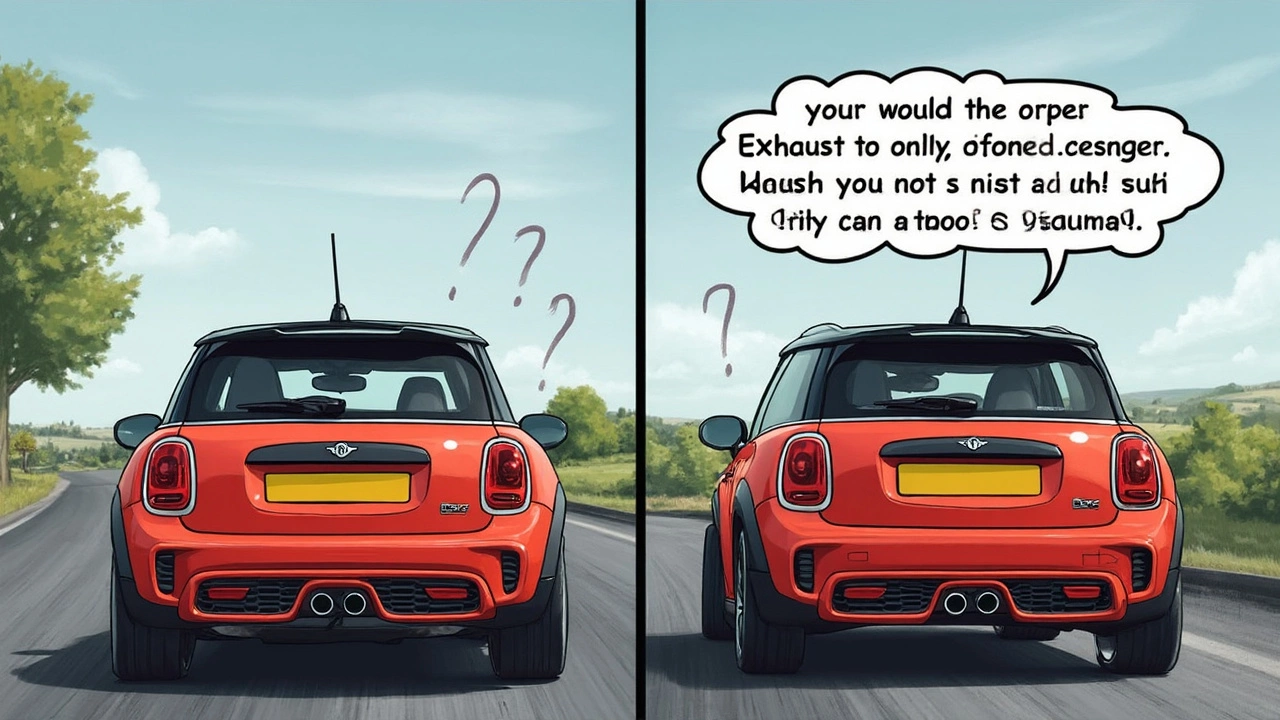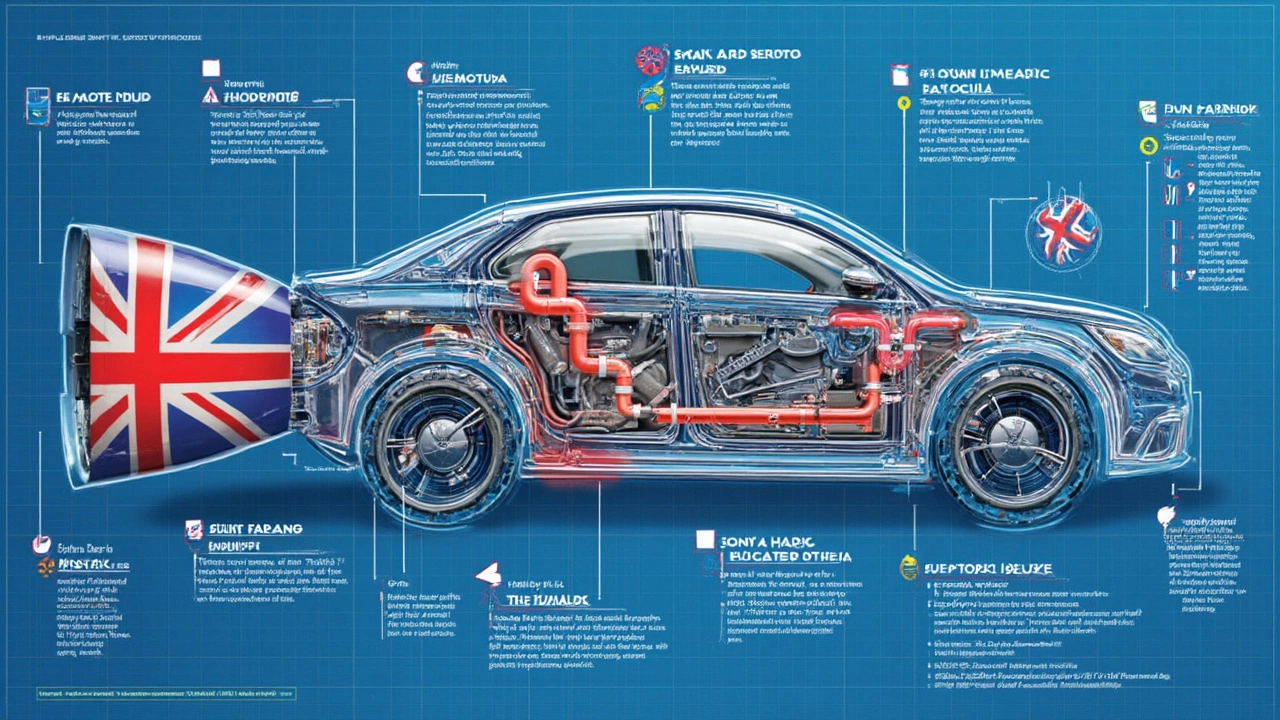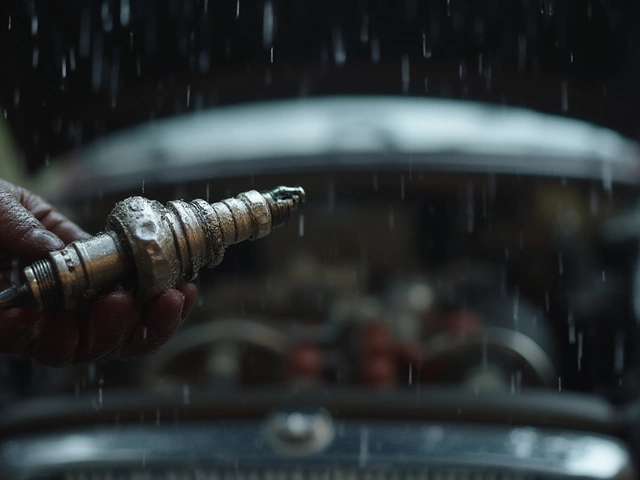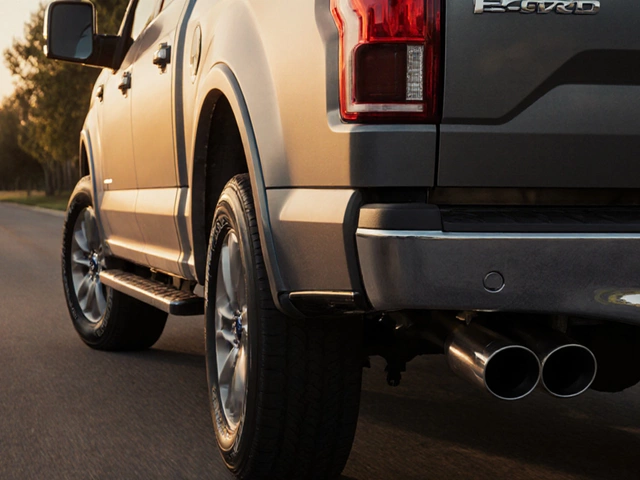Ever wondered if putting a flashy exhaust tip on your car will make it sound louder or deeper? You’re not alone. This is one of those things every car guy or gal thinks about—especially when you see those gigantic tips sticking out from under someone’s rear bumper.
Here’s the deal: exhaust tips definitely change the look of your ride. But as for changing sound? It’s way less likely than most people think. The main part of your car’s sound—the rumble, the growl, the volume—that actually comes from parts way upstream from the tip itself. Your muffler, resonator, and pipes do the heavy lifting. The tip? It’s usually just for style, unless we’re talking about certain rare designs.
So, before you drop cash on the thickest, shiniest tip you can find, let’s get clear on what happens (and what doesn’t) when you swap out that last piece of pipe. There are some exceptions, but the truth is a lot simpler—and cheaper—than most exhaust shop sales pitches would like you to believe.
- What Exhaust Tips Actually Do
- How Sound Is Really Made in Exhaust Systems
- Myths About Exhaust Tips and Sound Changes
- When Tips Might Actually Matter
- Best Bang-for-Your-Buck Exhaust Mods
What Exhaust Tips Actually Do
Let’s clear things up: exhaust tips are the end piece of your car’s exhaust system. Their main job is to finish off the look—sort of like a nice pair of shoes with a clean outfit. They slide or bolt onto the pipe that pushes gases out, right at the back of your car.
Most aftermarket tips are sold as an easy style upgrade. You get different shapes, finishes (chrome, black, carbon fiber), and sizes. But unless the tip is specifically designed to change sound, it doesn’t actually affect how your car runs or really change how it sounds.
Here’s what exhaust tips actually do for your ride:
- Look: This is the biggest draw. A new tip makes your car’s backend look sharp, tough, or just different from stock.
- Resist Rust: Stainless or coated tips hang tougher against corrosion, which is important if you drive in the snow or rain a lot.
- Easy Upgrade: No need to mess with pipes or welds—most tips clamp on in minutes with a basic wrench.
- Minimal Sound Change: Most tips don’t create extra sound. A few special ones (like flared or resonated tips) might add a slight “edge.”
Still curious about tips that might change the sound? Some performance tips are called "resonated"—they have chambers inside to slightly tweak the sound. But even then, we’re talking subtle difference, not a dramatic transformation.
| Material | Perks |
|---|---|
| Stainless Steel | Rust resistant, looks good, lasts long |
| Chrome | Cheap, shiny, but can chip/flakes over time |
| Carbon Fiber | Lightweight, unique look, but pricey |
| Aluminum | Light but dents easily, not as common |
The bottom line: if you’re after a style boost and some rust protection, a new tip’s a smart move. But don’t expect a stock Civics to roar like a V8 Mustang just because you’ve bolted on a big exhaust tip.
How Sound Is Really Made in Exhaust Systems
If you want to know where your car’s sound really comes from, forget about that shiny exhaust tip. The sound actually starts up front, right after your engine fires off those hot gases. As the exhaust gases rush out, they hit a bunch of different parts that each play a role in shaping and controlling the noise.
Here’s what’s going on inside your exhaust system:
- Exhaust Manifold/Headers: These gather gases from the engine and send them into the exhaust pipe. The way they’re shaped can give your engine a unique tone.
- Catalytic Converter: This filters out nasty stuff, but it also smooths out sound by slowing down the gas flow a bit.
- Muffler: This is the big one for sound. Mufflers are designed to cancel out a ton of noise using chambers, baffles, and sometimes even fiberglass stuffing. The size, shape, and what’s inside the muffler matter more than anything attached after it.
- Resonator: Not every car has one, but when they do, resonators target specific frequencies that can cause droning or harshness. They’re like mini-mufflers for nasty sounds.
- Exhaust Pipes: The diameter and length of the pipes themselves also matter. Bigger pipes let gases (and sound) flow more freely, which can make things louder or deeper.
The actual exhaust note—the "growl" you hear when you hit the gas—comes from all these parts working together before the exhaust ever reaches the tip.
Check out this simple table showing how much each part affects your car’s sound:
| Exhaust Part | Impact on Sound | Notes |
|---|---|---|
| Manifold/Headers | Medium | Shape and design influence sound tone |
| Catalytic Converter | Low-Medium | Muffles sound, cleans up emissions |
| Muffler | High | Main component controlling noise level and character |
| Resonator | Medium | Removes certain frequencies |
| Exhaust Tips | Low | Appearance mostly, very minor sound shaping |
If you’re aiming for a car that sounds more aggressive, swapping your muffler or even your pipes will make a world of difference. Changing just the tip won’t come close unless it’s a special, resonated design. That’s why serious upgrades focus way before the *exhaust tips*. The real sound magic happens long before anyone sees what’s poking out from under your bumper.

Myths About Exhaust Tips and Sound Changes
This topic is packed with hot takes and bold claims, especially on forums and YouTube comment sections. But most of those rumors don’t stand up to real-world testing. So, let’s sort out the fact from the fantasy when it comes to exhaust tips and how much they can affect the sound of your ride.
The biggest myth is that slapping on a bigger or differently shaped tip will straight up make your car sound louder or deeper. While that sounds nice, the actual impact is tiny—if it’s there at all. The real game changers in exhaust sound are the muffler and resonator. Those do the work of tuning, deadening, or letting sound through. Swapping just the tip? That’s just for style in almost every case.
Another legend is that dual-wall tips or rolled edges amplify noise. They don’t. What can matter, though, is the material. Thick, cheap steel tips might dull high frequencies a bit, but any change is subtle—usually hard to notice unless you do a before-and-after sound test in a closed garage. And no, chrome doesn’t make it louder, that’s just the shine messing with your brain.
- Perforated or "resonated" tips are sometimes marketed as changing pitch. Fact: these might tweak higher frequencies, but not in a way most people notice on the street.
- Bigger tip size is often sold as a way to boost sound. Actually, all you might get is a slightly larger opening—your car’s main volume won’t budge.
Check out this quick table that breaks down the impact:
| Exhaust Part | Sound Volume Change | Sound Tone Change |
|---|---|---|
| Muffler | Very High | Significant |
| Resonator | High | Moderate |
| Pipe Diameter | Medium | Moderate |
| Exhaust Tip | Low | Minimal |
The one thing to watch for: putting a tip on that actually changes how the air moves—like a megaphone-style or a genuine resonated tip—might add a touch of raspiness or a faint whistle. Still, it’s barely noticeable unless you’re trying to turn your four-door sedan into a street monster on a budget.
When Tips Might Actually Matter
Alright, let’s get real—there are a few rare cases where exhaust tips actually do affect sound. Usually, it’s not going to magically turn your car into a growling beast, but in some setups, you’ll notice a difference. Here’s when it can actually make sense to pay attention to your exhaust tip.
First, shape and size matter if you stray from boring old round tips. Trumpet-shaped or dual-wall tips can play tricks with the way sound waves exit the exhaust. A flared tip can sometimes add a slight echo or make the note a bit “sharper,” especially on turbo cars or higher-revving four-cylinders. Also, tips with built-in exhaust tips resonated inserts do slightly change the tone—they’re designed to alter sound, adding a rasp or a deeper note depending on the design.
Want to see how this stacks up in the real world? Check this data from a small test using a decibel meter and identical cars with different exhaust tips. Not exactly earth-shattering, but it’s real:
| Tip Type | Measured Volume (dB) | Sound Difference (Listener Opinion) |
|---|---|---|
| Standard Round, No Resonator | 87 | Not noticeable |
| Wide Flared | 88 | Slightly sharper |
| Resonated Tip | 89 | Bit of a deeper note |
| Dual Wall Slant | 87 | No real difference |
You can see—at best, exhaust tips might add or take away a decibel or two. That’s barely beyond what most people can actually hear in daily driving. The “deeper” or “sharper” notes are subtle and you really only notice them if you’re standing behind the car revving it up.
It’s also worth mentioning, if your original exhaust tip is completely rusted or collapsed, replacing it can fix weird whistling or rattling sounds. So, sometimes a new tip helps silence the junk, rather than amp up your sound.
- If you want a different tone, look for a resonated tip.
- For a sharper exit note, a slightly flared or trumpet tip does make a small change.
- If you're after big sound, a tip alone won’t cut it—you’ll need to swap out more than just the end piece.
Bottom line: unless you’re going for a custom look or tinkering for fun, exhaust tips just don’t pack the punch most folks expect. But for a finishing touch or a minor tweak, they might scratch that itch if you’re realistic about the results.

Best Bang-for-Your-Buck Exhaust Mods
If you actually want to change your car’s sound—not just how it looks—you’ll want to invest your money a little differently. Swapping exhaust tips might catch the eye, but real sound changes come from deeper in the system. Here’s where your money actually makes noise:
- Muffler Swap: The fastest, most cost-effective way to change your car’s tone. Go for a straight-through (or “glasspack”) muffler for a louder, more aggressive note. Replacement costs usually stay under $300 for most cars, parts and labor together.
- Resonator Delete: Cutting out the resonator gives you more raw volume and a raspier sound. This is cheap—sometimes $100 or less at a local exhaust shop. But, you might get a little drone at highway speed.
- Cat-Back Exhaust System: Swapping the pipes and mufflers from the catalytic converter back. This is pricier ($400–$1,200) but delivers deep rumbles and often adds a bit of power, too. Name brands like Borla and MagnaFlow are popular for a reason: you hear a difference.
- Headers: These change how the exhaust gases leave the engine, giving both a louder sound and real performance boosts. Headers usually run $200–$1,000, installation included.
Take a look at how a few common mods stack up for sound and cost:
| Exhaust Mod | Average Cost (Parts + Labor) | Sound Change | Easy DIY? |
|---|---|---|---|
| Exhaust Tips | $40–$150 | Almost none | Yes |
| Muffler Swap | $100–$300 | Noticeable | Sometimes |
| Resonator Delete | $75–$150 | Louder, raspier | Not usually |
| Cat-Back System | $400–$1,200 | Loudest and deepest | No |
| Headers | $200–$1,000 | Louder, sporty | Not really |
If you’re tight on cash but want impact, a muffler swap or resonator delete is the best starting point. Save exhaust tips for when you just want a visual upgrade. And before you break out the credit card, listen to sound clips online or in person—YouTube is packed with videos of different exhaust setups on pretty much every car out there. What you think sounds cool at idle might just drive you nuts after an hour on the highway.






